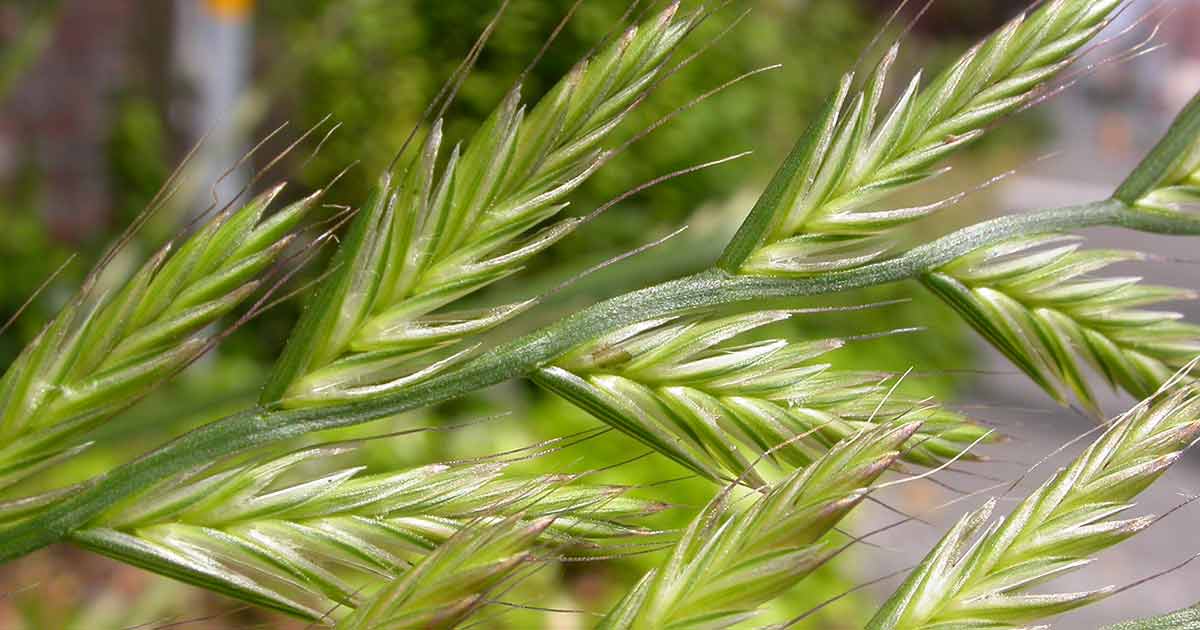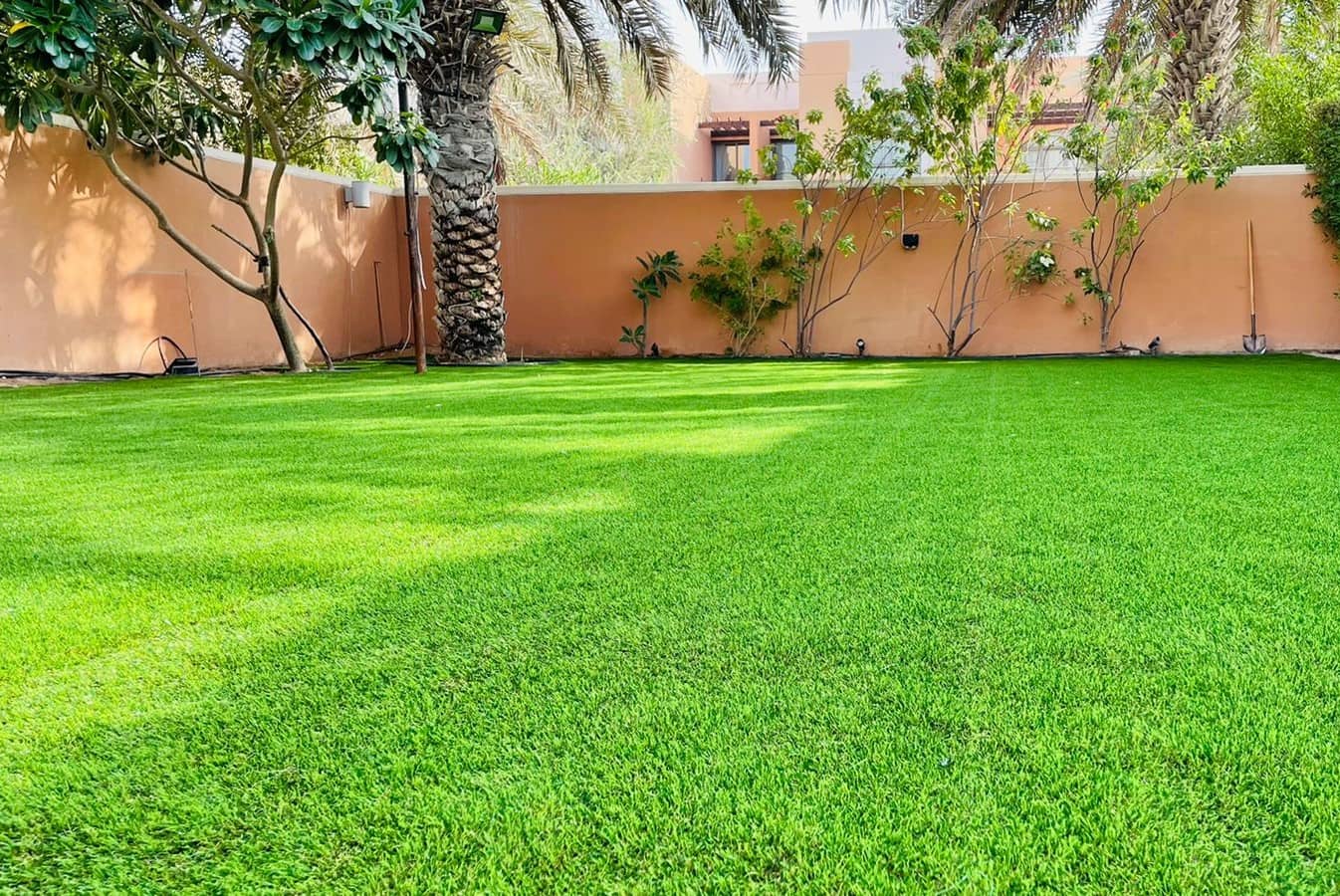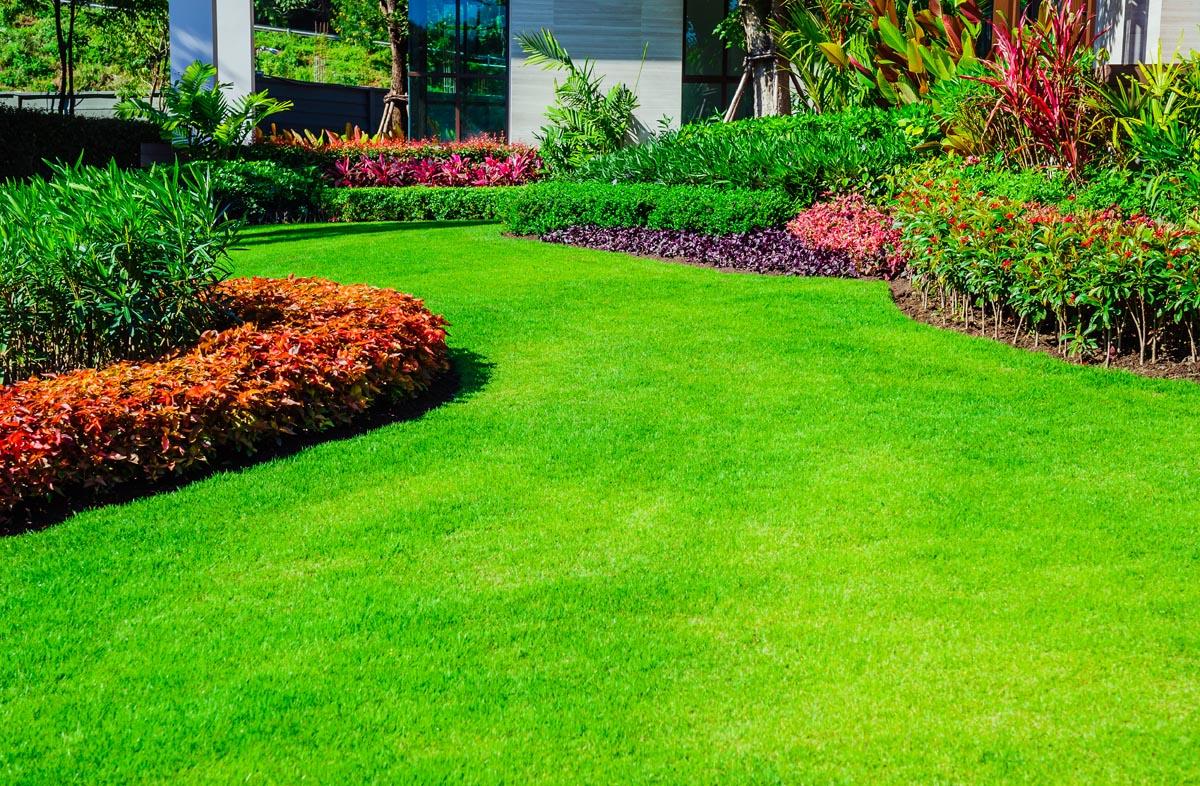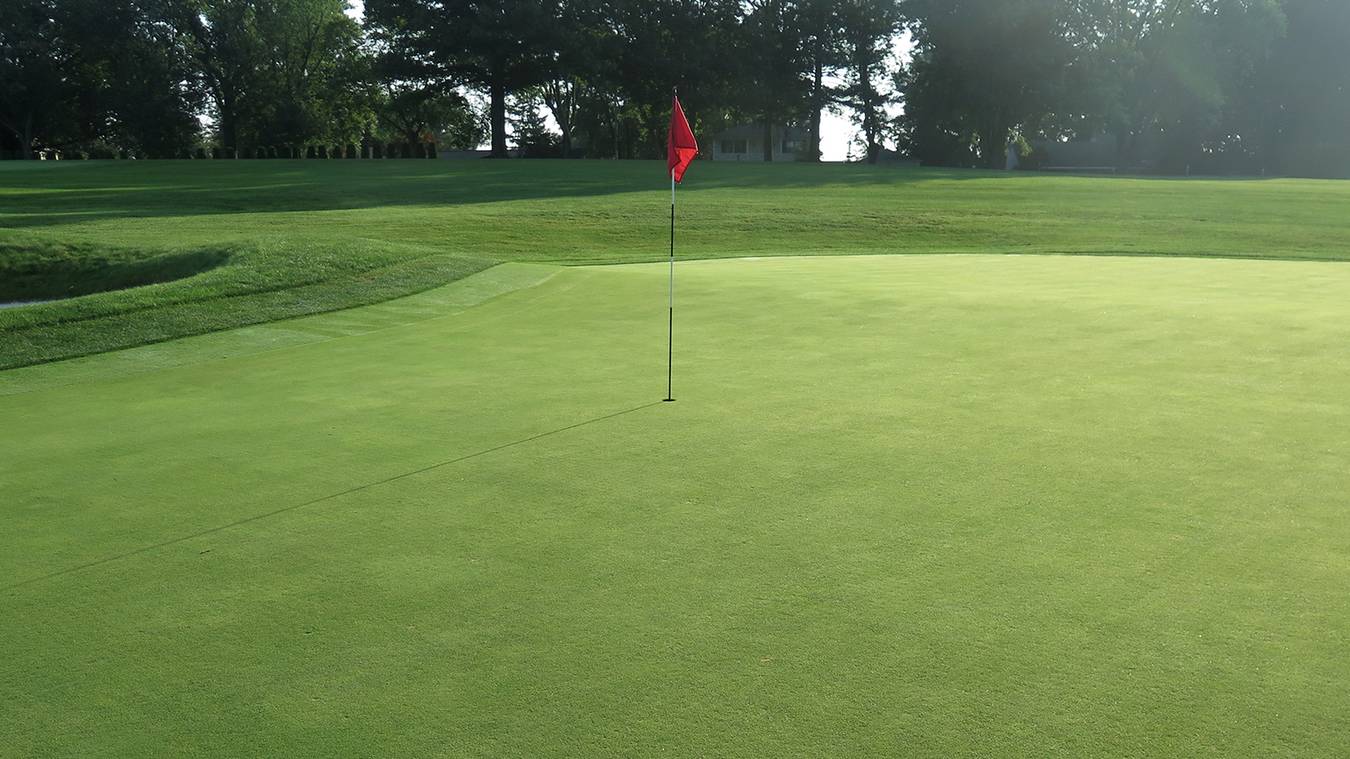Home>Gardening & Outdoor>Landscaping Ideas>What Type Of Grass Is Ryegrass


Landscaping Ideas
What Type Of Grass Is Ryegrass
Published: January 28, 2024
Discover the best landscaping ideas with ryegrass and create a lush, vibrant lawn. Learn about the benefits and uses of ryegrass for your landscaping projects.
(Many of the links in this article redirect to a specific reviewed product. Your purchase of these products through affiliate links helps to generate commission for Storables.com, at no extra cost. Learn more)
Introduction
Ryegrass, a versatile and resilient grass species, is a popular choice for various landscaping and agricultural applications. This cool-season grass is valued for its rapid germination, lush appearance, and adaptability to a wide range of growing conditions. Whether you're a homeowner aiming to achieve a vibrant lawn or a farmer seeking an effective forage option, understanding the characteristics, uses, growing conditions, and maintenance requirements of ryegrass is essential for successful cultivation. In this comprehensive guide, we will delve into the various facets of ryegrass, shedding light on its diverse types, optimal growing conditions, and best practices for nurturing its growth. Whether you're a novice gardener or a seasoned agriculturalist, this article aims to equip you with the knowledge needed to make informed decisions regarding the incorporation of ryegrass into your landscaping or farming endeavors. Let's embark on a journey to explore the multifaceted world of ryegrass and uncover the secrets to harnessing its full potential.
Key Takeaways:
- Ryegrass comes in various types, each with unique benefits. Whether you need quick ground cover or durable turf, understanding the differences helps you choose the right type for your landscaping or farming needs.
- Ryegrass is a versatile grass that can nourish livestock, beautify lawns, and improve soil health. By providing the right growing conditions and proper care, you can harness its adaptability and utility for your landscaping and agricultural endeavors.
Read more: What Is Ryegrass
Characteristics of Ryegrass
Ryegrass encompasses a spectrum of varieties, each possessing distinct characteristics that cater to specific landscaping and agricultural needs. Understanding the differences between annual and perennial ryegrass, Italian and Westerwold ryegrass, and intermediate and perennial ryegrass is crucial for selecting the most suitable option for your intended application.
Annual vs. Perennial Ryegrass
Annual ryegrass, as the name suggests, completes its life cycle within a single growing season. It germinates quickly, providing rapid ground cover and erosion control. This makes it an ideal choice for temporary or seasonal landscaping needs. In contrast, perennial ryegrass is a longer-term investment, persisting for multiple years. It establishes robust root systems, contributing to its durability and ability to withstand foot traffic, making it a popular choice for lawns and recreational areas.
Italian vs. Westerwold Ryegrass
Italian ryegrass, known for its rapid growth and high forage quality, is often utilized in agricultural settings as a valuable source of nutrition for livestock. Its adaptability to a variety of soil types and climates enhances its appeal to farmers seeking a resilient forage option. On the other hand, Westerwold ryegrass boasts rapid establishment and prolific seed production, making it a favored choice for quick, temporary ground cover and erosion control, particularly in reclamation and restoration projects.
Intermediate vs. Perennial Ryegrass
Intermediate ryegrass, characterized by its intermediate growth habit and winter hardiness, serves as an excellent choice for overseeding warm-season lawns or as a cover crop in agricultural rotations. Its adaptability to diverse climates and soil conditions renders it a versatile option for enhancing forage quality and maintaining soil health. Perennial ryegrass, with its fine texture and lush appearance, is a popular choice for premium turf applications, such as golf courses and residential lawns. Its enduring nature and ability to self-repair make it a sought-after option for areas subjected to heavy use.
By discerning the unique attributes of each type of ryegrass, you can make informed decisions when selecting the most suitable variety for your specific landscaping or agricultural requirements.
Read more: What Is Perennial Ryegrass
Uses of Ryegrass
Ryegrass, renowned for its versatility and adaptability, serves a multitude of purposes across landscaping and agricultural domains. Whether it’s nourishing livestock, adorning lawns, or enriching soil, ryegrass stands as a valuable ally in various applications.
Forage
Ryegrass, particularly the Italian and Westerwold varieties, plays a pivotal role in livestock management as a high-quality forage option. Its rapid growth and nutritional value make it a favored choice for grazing and hay production. Cattle, sheep, and horses benefit from the rich protein content and palatability of ryegrass, contributing to their overall health and productivity. The adaptability of ryegrass to diverse climates and soil types further enhances its appeal to farmers seeking a reliable forage solution for their livestock.
Turfgrass
Perennial ryegrass, prized for its fine texture and lush appearance, is a staple in the realm of turfgrass. It graces golf courses, sports fields, and residential lawns, adding a touch of elegance while withstanding the rigors of frequent use. Its ability to self-repair and establish dense, resilient turf makes it an ideal choice for areas requiring a durable, visually appealing ground cover. The aesthetic appeal and durability of perennial ryegrass elevate the visual and functional aspects of landscapes, making it a sought-after option for turfgrass applications.
Cover Crop
Ryegrass, particularly the intermediate variety, serves as a valuable cover crop in agricultural rotations. Its ability to suppress weeds, prevent erosion, and enhance soil health through nitrogen fixation and organic matter accumulation makes it an indispensable component of sustainable farming practices. By incorporating ryegrass as a cover crop, farmers can improve soil structure, reduce erosion, and mitigate weed pressure, thereby fostering a conducive environment for subsequent cash crops. The multifaceted benefits of ryegrass as a cover crop underscore its significance in promoting soil conservation and sustainable agricultural practices.
From nourishing livestock to adorning landscapes and enriching soil, ryegrass emerges as a versatile and indispensable asset, catering to a diverse array of landscaping and agricultural needs.
Read more: When Does Annual Ryegrass Die
Growing Conditions for Ryegrass
The successful cultivation of ryegrass hinges upon creating an environment that caters to its specific soil, climate, and sunlight and water requirements. By understanding and accommodating these growing conditions, you can foster the optimal conditions for ryegrass to thrive, whether it’s for forage, turfgrass, or cover crop purposes.
Soil Type
Ryegrass exhibits remarkable adaptability to various soil types, from sandy loam to heavy clay. However, it thrives best in well-draining soils with a pH range of 5.5 to 7.5. This broad soil adaptability renders ryegrass a versatile choice for diverse landscaping and agricultural applications. Before sowing ryegrass seeds, it is advisable to conduct a soil test to assess nutrient levels and pH, enabling the implementation of targeted soil amendments to optimize growing conditions for the grass.
Climate
Ryegrass demonstrates a preference for cool, temperate climates, thriving in regions characterized by mild winters and moderate summers. It exhibits resilience to frost, making it an ideal cool-season grass for regions with fluctuating temperatures. The adaptability of ryegrass to a broad climatic spectrum renders it a viable option for cultivation in various geographical locations, provided that the soil and moisture requirements are met.
Sunlight and Water Requirements
Ryegrass thrives in areas with ample sunlight, benefiting from at least 4 to 6 hours of direct sunlight daily. However, it also exhibits tolerance to partial shade, making it a versatile option for lawns and landscapes with varying light conditions. In terms of water requirements, ryegrass necessitates consistent moisture levels, particularly during the germination and establishment phases. Adequate irrigation, especially during dry spells, is crucial for promoting robust growth and ensuring the establishment of a lush, verdant stand of ryegrass.
By tailoring the growing conditions to accommodate ryegrass’s soil, climate, and sunlight and water requirements, you can create an environment conducive to the flourishing of this resilient and adaptable grass species.
Read more: What Type Of Grass To Plant
Maintenance and Care for Ryegrass
Proper maintenance and care are essential for nurturing the health and vitality of ryegrass, whether it’s utilized for forage, turfgrass, or cover crop purposes. By implementing effective fertilization practices, adhering to optimal mowing techniques, and implementing pest and disease control measures, you can ensure the robust growth and longevity of ryegrass in your landscaping or agricultural endeavors.
Fertilization
Applying a balanced fertilizer is crucial for promoting the vigorous growth and nutritional quality of ryegrass. A soil test can provide valuable insights into the specific nutrient requirements of the grass, enabling the formulation of a targeted fertilization plan. Nitrogen, phosphorus, and potassium are essential nutrients that contribute to the overall health and resilience of ryegrass. For forage and turfgrass applications, a split application of nitrogen during the active growing season can sustain the vigor and protein content of the grass. Additionally, incorporating organic matter, such as compost, into the soil can enhance its fertility and structure, fostering an environment conducive to the thriving of ryegrass.
Mowing
Adhering to proper mowing practices is pivotal for maintaining the aesthetic appeal and resilience of ryegrass in turfgrass applications. For optimal turf quality, ryegrass should be mowed at a height of 1.5 to 2.5 inches, allowing it to establish a dense, lush canopy while inhibiting weed encroachment. Regular mowing at the recommended height prevents stress on the grass and promotes tillering, contributing to the development of a robust, visually appealing turf. It is advisable to refrain from removing more than one-third of the grass blade during each mowing session to avoid stunting its growth and compromising its overall health.
Pest and Disease Control
Vigilant pest and disease management is essential for safeguarding ryegrass from potential threats that can compromise its vitality. Common pests, such as armyworms and aphids, can inflict damage on ryegrass, necessitating proactive monitoring and targeted control measures to prevent infestations. Implementing integrated pest management strategies, such as biological controls and selective pesticide applications, can effectively mitigate pest pressure while minimizing environmental impact. Additionally, being vigilant for signs of diseases, such as leaf spot and rust, and promptly implementing cultural and, if necessary, chemical control measures can safeguard the health and longevity of ryegrass stands.
By incorporating effective fertilization practices, adhering to optimal mowing techniques, and implementing vigilant pest and disease control measures, you can ensure the vitality and longevity of ryegrass, whether it’s adorning your lawn or serving as a valuable forage and cover crop option in agricultural settings.
Read more: What Are All The Types Of Grass
Conclusion
Ryegrass, with its diverse varieties and multifaceted applications, stands as a resilient and adaptable grass species that enriches landscapes and agricultural settings alike. Whether it’s providing nourishment to livestock, adorning lawns with lush greenery, or enhancing soil health as a cover crop, ryegrass embodies versatility and utility. By understanding the distinct characteristics of annual and perennial ryegrass, Italian and Westerwold ryegrass, and intermediate and perennial ryegrass, individuals can make informed decisions regarding the most suitable variety for their specific needs.
As a high-quality forage option, ryegrass contributes to the health and productivity of livestock, while its role as a premium turfgrass elevates the visual and functional aspects of landscapes. Additionally, its value as a cover crop underscores its significance in promoting soil conservation and sustainable agricultural practices.
The successful cultivation of ryegrass hinges upon creating an environment that caters to its specific soil, climate, and sunlight and water requirements. By tailoring the growing conditions to accommodate these needs, individuals can foster the optimal conditions for ryegrass to thrive, whether it’s for forage, turfgrass, or cover crop purposes.
Proper maintenance and care are essential for nurturing the health and vitality of ryegrass. By implementing effective fertilization practices, adhering to optimal mowing techniques, and implementing pest and disease control measures, individuals can ensure the robust growth and longevity of ryegrass in their landscaping or agricultural endeavors.
In conclusion, ryegrass stands as a stalwart ally in the realm of landscaping and agriculture, offering a myriad of benefits and applications. By harnessing its adaptability, resilience, and utility, individuals can leverage the diverse attributes of ryegrass to enhance their landscapes, nourish their livestock, and foster sustainable agricultural practices, thereby reaping the bountiful rewards of this versatile grass species.
Frequently Asked Questions about What Type Of Grass Is Ryegrass
Was this page helpful?
At Storables.com, we guarantee accurate and reliable information. Our content, validated by Expert Board Contributors, is crafted following stringent Editorial Policies. We're committed to providing you with well-researched, expert-backed insights for all your informational needs.












0 thoughts on “What Type Of Grass Is Ryegrass”